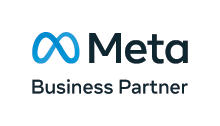Implementing a link building and digital PR strategy for a regulated, highly competitive niche like finance requires an in-depth understanding of the sector and regulatory frameworks that dictate what can and cannot be said. Add to that the E-E-A-T requirements Google places on YMYL industries like financial services, and you’ll soon realise why run-of-the-mill link building tactics just won’t suffice.
AccuraCast is a specialist finance seo agency, and our expert have worked for decades in the financial services sector. In this article, we’ll suggest tactics that we’ve found work well for a compliance-first approach, and share pitfalls to watch out for. But first, let’s define the basics…
Definition: Link building
Link building is the process of acquiring inbound links from other websites to your own, with the aim of improving your organic search visibility. It is a critical component of any robust SEO strategy.
Definition: Digital PR
Digital PR, or online public relations, is the strategic management of a firm’s reputation and communications with the public and its stakeholders via online channels. It involves securing brand citations and links on reputable websites. From an SEO point of view, digital PR is a method to secure high-authority backlinks.
Why traditional link building fails in regulated financial services
Traditional link building often falls flat in regulated sectors like finance, because the subject matter is perceived to be inherently “dry” and compliance-heavy, leaving little room for the type of engaging and entertaining content that naturally attracts backlinks.
Unlike sectors like travel and fashion, where brands can earn links through aspirational stories, stunning visuals and relatable experiences, finance firms must navigate strict rules that limit creativity and discourage publishers from linking to content that may be seen as promotional or potentially non-compliant.
The YMYL & E-E-A-T hurdle
Financial content is considered YMYL (Your-Money-Your-Life) by Google and ChatGPT, because any incorrect or misleading information could have a serious impact on an individual’s financial stability. This means search engines and LLMs require demonstrable experience, expertise, authoritativeness, and trustworthiness (E-E-A-T) from content. Low quality or irrelevant links pointing to your pages can hurt rankings and trigger manual penalties in this sector.
Regulatory compliance is paramount

Learn about important security & compliance considerations for financial institutions.
The UK’s FCA and the SEC / FINRA in the USA specify what must be disclosed as well as where and how disclosures should appear, to ensure they’re clear, prominent, and not misleading. These rules apply to content on your site and content that represents or is endorsed by your brand on third-party sites.
The authority ceiling
One of the biggest challenges fintech, insurtech and challenger brands in the finance and insurance industry face is that the top organic spots are often dominated by legacy brands and government websites with a rich history of high-quality, editorial links from top-tier publications. This makes link acquisition from equally high-authority domains essential for businesses that want a share of that organic visibility.
As a specialist fintech SEO agency, we often face this challenge, which can feel insurmountable for scale-ups. Our specialists advise all client not to be intimidated by the huge link volumes most large banks have. Quality matters more than quantity, and earning high-authority links that are perfectly relevant from the most trusted sources in your niche can often help surpass big-name competitors.
Paid linking risks in finance
It’s important to note that paid linking in the financial services sector carries significant risks from an SEO, legal, and reputational point of view. Google explicitly prohibits buying or selling links to artificially inflate a website’s perceived authority. The algorithm is especially sensitive to unnatural link patterns in YMYL sectors, and this is supported by manual reviews.
We’ve written a detailed article explaining why we don’t pay for backlinks. It’s worth a read if you are still considering using advertorials or other sneaky ways to boost your link profile.
Moreover, the FCA, SEC and other regulators are likely to interpret paying for links as a financial promotion or endorsement, which can expose your firm to liability. Undisclosed paid placements violate consumer protection and advertising standards, and risk severe penalties if discovered.
In the hyper-competitive insurance space, this is especially important. Disavowing or getting rid of paid links acquired by insurance SEO agencies could help in extreme cases, especially if the backlink profile is largely comprised of paid links.
E-E-A-T-driven digital PR strategies for finance
Digital PR, by its very nature, earns higher quality, editorial links from reputable sources. This makes digital PR a better option than traditional link building for finance, and directly addresses the authoritativeness and trustworthiness factors of E-E-A-T.
AccuraCast’s finance SEO and PR specialists recommend the following five strategies, which we’ve found work best for financial services link building:
-
Data-led storytelling and original research
Mining your proprietary data or conducting reliable, statistically significant surveys to find new data is a great way to generate research and tell stories that media outlets and industry bodies will cite. Presenting complex data in shareable snippets such as graphs or mini-infographics, attracts citation links, and interactive infographics or tools attracts editorial and organic social & forum links.
-
Expert commentary and newsjacking
Answering requests for expert commentary from journalists, news producers and bloggers can earn valuable links. Your leadership team and advisors or analysts should be certified and/or able to demonstrate significant experience in the subject matter.
Speed is of the essence with newsjacking. Your team must have processes and guidelines in place to rapidly provide compliant, expert quotes on breaking financial news such as interest rate changes, earnings announcements or government budgets, to journalists working on tight deadlines. While newsjacking earns brand mentions, it may not result in link placement on the article organically – but it doesn’t hurt to ask politely beforehand; (journalists tend not to like being asked to edit an article after it’s been published!)
-
Thought leadership content & high-value assets
Creating linkable assets like comprehensive white papers, personal finance calculators, stock trading guides, economic forecasts or interactive calculators that serve as resources is another reliable way to get other websites to link to your resource.
A word of advice here: do your research and identify resources that are unique to your business and valuable to your audience. Producing tools or guides that already exist from reputable sources is unlikely to attract new links unless your resource is significantly better or different in its approach.
-
Journalist and media relationship building
Building relationships with journalists who cover financial, business, and even tech news – think FT, Wall Street Journal, TechCrunch, Economist, Forbes etc. – can yield rich rewards in the long run. Once a journalist trusts your experts, they are likely to return to them for commentary, which in turn can earn your business a steady flow of highest-authority, relevant editorial links.
To build long-term relationships with journalists in the finance, business, tech or niche financial sectors, focus on value, consistency and credibility rather than one-off outreach. Creating a news hub on your site, offering useful angles (not press releases), and sharing quick responses with quotable insights, can help the journalist and secure your place in their “little black book” of sources.
Compliant link acquisition tactics
In addition to digital PR, some traditional link building tactics can still be employed in the financial services industry, so long as they’re done in a compliant way. Here are four tactics that still work:
-
Unlinked brand mentions
Monitor the web for your brand or executives’ names and request the author to add a link for attribution.
-
Resource page link building
Identify high-authority pages that list ranked resources and then pitch your brand or product or resource to be included in that list of “best of…”. E.g. “best mortgage calculators” or “top tax advisors in New Jersey”.
-
Competitor backlink gap analysis
Using link analysis tools such as ahrefs and semrush, identify high-authority sites linking to your competitors and create superior resources to win those links.
-
Strategic partnerships
Collaborating with non-competing, complementary brands, such as your suppliers and brokers can also be a valuable source of high quality links. For example, a mortgage lender might link to a number of local mortgage advisory firms, or retail IT providers may link to a recommended payment terminal provider. Read more about local SEO considerations for banks, IFAs, insurance brokers, and other financial service providers.
Compliance checklist for financial link building
We’ve already discussed the risks of non-compliant content on your website and third-party sites. It’s crucial for SEO, marketing and/or PR teams in financial institutions to check for compliance when building links.
Disclaimers and disclosure – ensure you include non-advice disclaimers on all content used for link building
- Vet link partners – establish a system for assessing a linking site’s own E-E-A-T score, and avoid low-quality, untrustworthy, or downright spammy sources that could risk incurring a Google penalty or regulatory action.
- Avoid link schemes – stay away from black-hat tactics like buying links, participating in link farms, excessive reciprocal link exchanges, or disguising transactions to look like organic links.
- Author bio signal – ensure all expert content features detailed author bios including the individuals qualifications such as degrees, certifications and real-world experience, even on third-party sites where the person may be guest blogging.
Measuring success beyond domain authority
A well-orchestrated link building and digital PR campaign should deliver measurable performance gains and deliver real outcomes for your business, beyond just a boost in vanity metrics such as domain authority (DA), domain rating (DR) or PageRank.
- Quality over quantity – The metrics that matter most are link source authority, link relevance, linking site traffic, referral traffic to your site, and the presence of E-E-A-T signals on the link source.
- Referral traffic value – Analyse which links drive qualified, high-intent traffic, not just SEO value, and acquire more links from that and similar sources.
- Branded search uplift – Digital PR should lead to an increase in direct search volume for your brand terms. This is best measured over longer time periods (6 months or longer).
Summary:
In finance, link building and digital pr must be a single, compliant, and E-E-A-T-focused strategy. Working with a specialist SEO agency for finance brands can ensure that you remain compliant – remember, regulators can even hold you responsible for misleading information shared by your agency!
If you’ve historically worked with SEO providers or link building companies that don’t specialise in financial services, we recommend auditing your current link profile against regulatory and E-E-A-T standards.
Discover our digital PR and link building services


 Mining your proprietary data or conducting reliable, statistically significant surveys to find new data is a great way to generate research and tell stories that media outlets and industry bodies will cite. Presenting complex data in shareable snippets such as graphs or mini-infographics, attracts citation links, and interactive infographics or tools attracts editorial and organic social & forum links.
Mining your proprietary data or conducting reliable, statistically significant surveys to find new data is a great way to generate research and tell stories that media outlets and industry bodies will cite. Presenting complex data in shareable snippets such as graphs or mini-infographics, attracts citation links, and interactive infographics or tools attracts editorial and organic social & forum links. Disclaimers and disclosure – ensure you include non-advice disclaimers on all content used for link building
Disclaimers and disclosure – ensure you include non-advice disclaimers on all content used for link building









